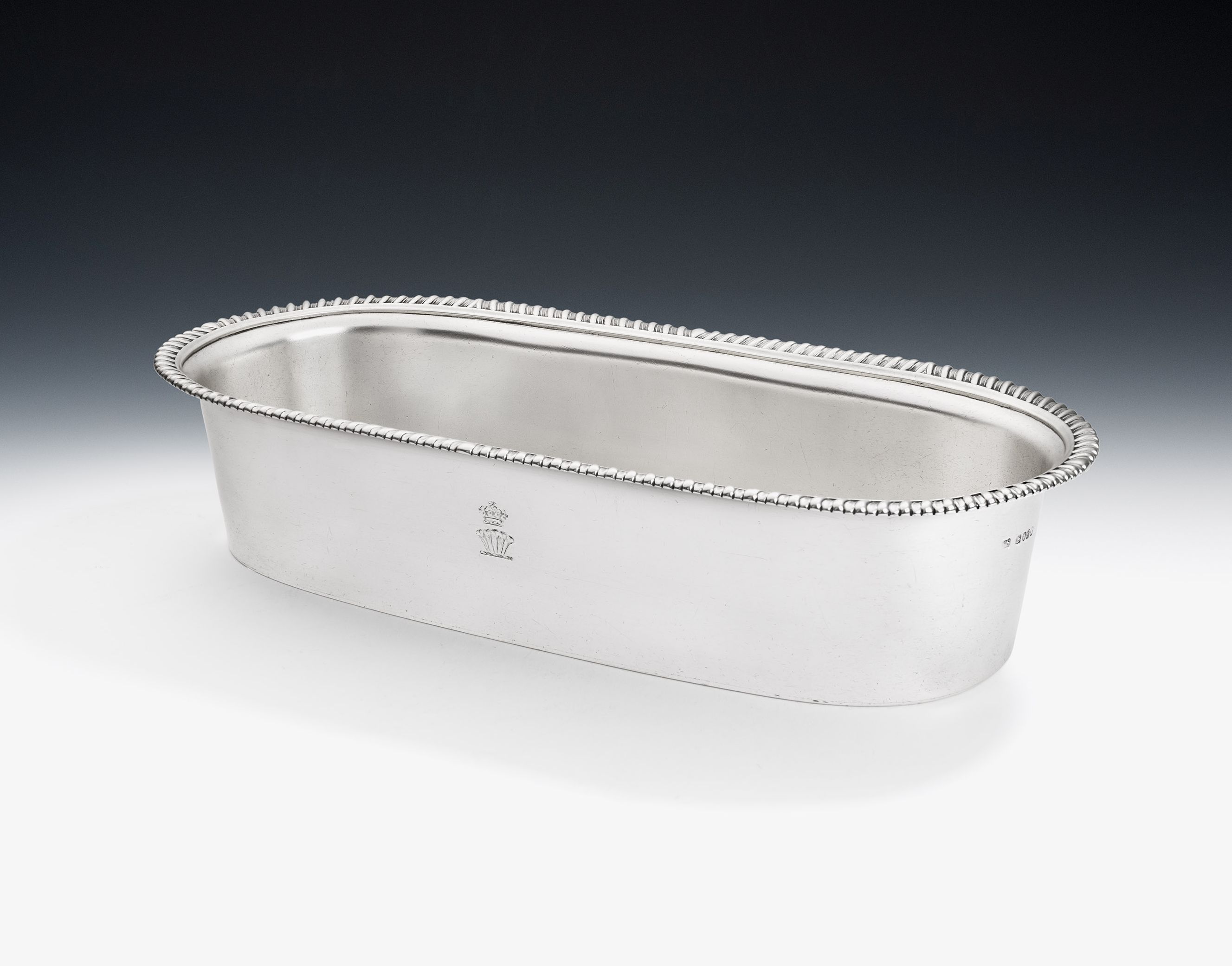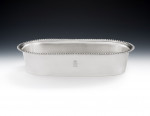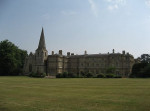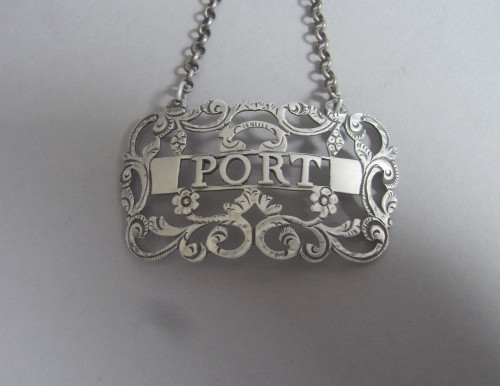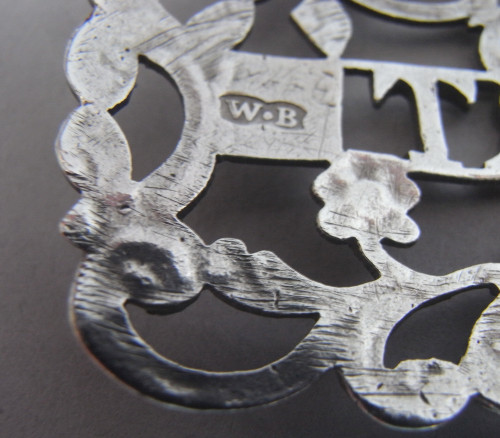PAUL STORR. An exceptional and very rare Knife Tray made in London in 1820 by Paul Storr.
PAUL STORR. An exceptional and very rare Knife Tray made in London in 1820 by Paul Storr.
375455
The Tray is modelled in a deep, large, broad rectangular form with a flared rim decorated with bold gadrooning. The side of the main body is engraved with s contemporary Crest below the Coronet of a Baron. The Crest is that of Dutton, for John Dutton, 2nd Baron Sherborne ( 1779-1862) of Sherborne Park, Gloucestershire.
This piece is of the finest quality and has an exceptional weight, as would be expected of Paul Storr, the greatest of all British Silversmiths. This piece would have been used for Knives however its size lends itself to a wide range of uses on the table, such as for bread or fruit or indeed a central floral display. It is most unusual to find Paul Storr making such an item and this piece is very well marked on the side of the main body.
Length: 16.4 inches, 41 cm.
Height: 6 inches, 15 cm.
Width: 7 inches, 17.5 cm.
Weight: 56oz.
PROVENANCE:
- Made in 1820 for John Dutton, 2nd Baron Sherborne (1779-1861) of Sherborne Park, Gloucestershire.
- Thence by Descent until 2025.
JOHN DUTTON - 2nd BARON SHERBORNE.
The 2nd Baron Sherborne, the son of James Dutton, 1st Baron Sherborne (1744-1820) and his wife Elizabeth Coke, daughter of Wenman Coke of Holkham, Norfolk, played a significant role in the architectural development of Sherborne House. Park. His marriage to Mary Legge in 1803 later brought a considerable inheritance on the death of her father Henry Bilson-Legge, 2nd Baron Stawell of Somerton in 1820. Lord Stawell’s father had been Lord Chancellor and a younger son of the Earl of Dartmouth.
It can be no coincidence that Lord Sherborne started to correspond with various architects around 1820, looking to complete his father’s intention of rebuilding the family seat. Sir Robert Smirke (1780-1867) was involved briefly, but it was not until the late 1820s that work started under the architect Lewis Wyatt (1777-1853), son of Benjamin Wyatt. Wyatt was noticeably absent for much of the time and numerous problems later emerged include dry rot in a number of the ground floor room. Remedial work was carried out by Anthony Salvin (1799-1881), who designed many of the ornate ceilings. The firm of Morant and Son finished in the interiors with work commencing in 1838.
Lord Sherborne enlarged and aggrandised his grandfather’s silver dinner service, using the services of Paul Storr to create dish covers and more utilitarian pieces for dining. A painting of the 2nd Baron is attached painted in 1841 by William Grove.
THE MAKER - PAUL STORR
Paul Storr was England's most celebrated silversmith during the first half of the nineteenth century and his legacy lives on today. His pieces historically and currently adorn royal palaces and the finest stately homes throughout Europe and the world. Storr's reputation rests on his mastery of the grandiose neo-Classical style developed in the Regency period. He quickly became the most prominent silversmith of the nineteenth century, producing much of the silver purchased by King George III and King George IV. Storr entered his first mark in the first part of 1792, which reflects his short-lived partnership with William Frisbee. Soon after, he began to use his PS mark, which he maintained throughout his career with only minor changes. His first major work was a gold font commissioned by the Duke of Portland in 1797 and in 1799 he created the "Battle of the Nile Cup" for presentation to Lord Nelson.
Much of Storr's success was due to the influence of Philip Rundell, of the popular silver retailing firm, Rundell, Bridge and Rundell. Rundell's firm nearly monopolised the early nineteenth-century market for superior silver and obtained the Royal Warrant in 1806. This shrewd businessman realised the talent of Paul Storr and began pursuing him in 1803, however it was not until 1807 that Storr finally joined the firm.[4] After many years of working for Rundell, Storr realised he had lost much of his artistic freedom and by 1819 he left the firm to open his own shop, turning his attentions towards more naturalistic designs and soon began enjoying the patronage he desired. After only a few years of independence, Storr realised he needed a centralised retail location and partnered with John Mortimer, founding Storr and Mortimer in 1822 on New Bond Street.
RELATED ITEMS

